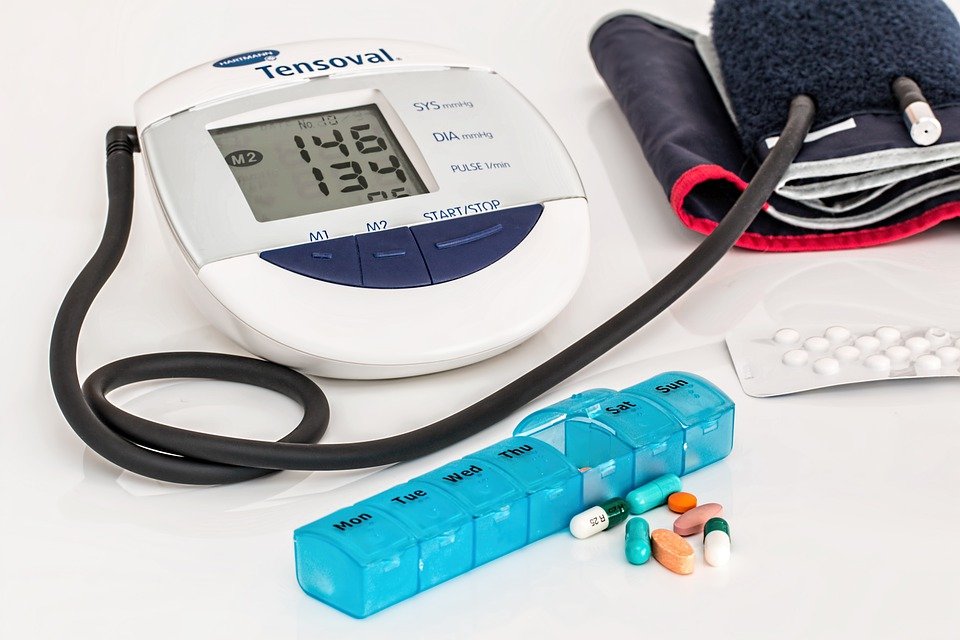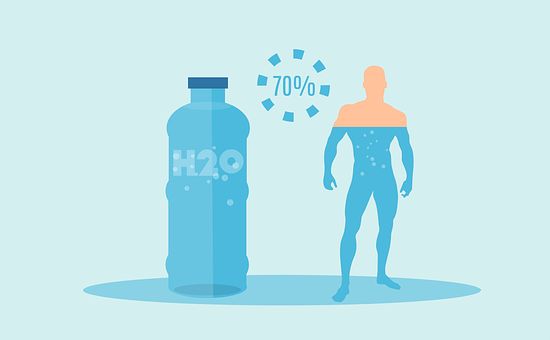
Most headaches are benign, and go away on their own or with simple self-care, but some can be a sign of a more serious condition. Headaches are a common occurrence, with many people opting to treat themselves with over the counter painkillers, extra hydration, or a short period of rest. For most people, these headaches are benign and will eventually go away on their own. However, some headaches can be indicative of a more serious condition and warrant a trip to the doctor.
If you have a headache, it’s most likely not caused by a brain tumor. However, if your headaches are severe, frequent, or unusual in any way, it’s understandable to worry.
Types of headache
There are two types of headaches: primary and secondary. Primary headaches are not caused by another condition, while secondary headaches are caused by an underlying illness or injury.
Your doctor can usually determine the probable cause of your headache by talking to you and examining you. Once the cause is determined, you and your doctor can decide on a course of action to reduce or eliminate the headaches. This may involve taking medication only when you have a headache, taking medication every day to prevent headaches, or, in some cases, stopping a medication you are already taking.
Sometimes headaches might be a sign of a more serious problem and will need to be looked into further.
Primary headaches
Tension headaches
Tension headaches are often felt as a band or pain across the forehead. They can last for several days, but usually do not interfere with sleep. Most people can still work with a tension headache, although they may be sensitive to bright light or noise. They often worsen as the day progresses, but are not usually made worse by physical activity.
Migraines
Migraines are a very common type of headache. They are usually one-sided and throbbing. If you have a headache that is one-sided, throbbing, and makes you feel sick, it is more likely to be a migraine than anything else. Migraines can be very severe, and some people need to sleep for a while to make the headache go away.
Cluster headaches
Cluster headaches are characterized by intense pain that can be debilitating. They typically occur in cycles, with periods of active headaches followed by remission. They are less common than other types of headaches and often affect adult male smokers. Cluster headaches are often described as the worst pain a person has ever experienced.
Cluster headaches are usually unilateral, with lid ptosis, lacrimation, and rhinorrhea ipsilateral to the pain.
Chronic tension headaches
Chronic tension headaches are usually caused by muscle tension in the back of the neck and affect women more often than men. These headaches can be started by neck injuries or tiredness and may be made worse by medication overuse. A headache that occurs almost every day for three months or more is called a chronic daily headache.
Medication-overuse headaches
Medication-overuse headaches are caused by taking painkilling medication too often. The body responds by making more pain sensors in the head, which makes the headache worse. People who have these headaches often take more and more painkillers, but they don’t work.
Headaches that are caused by overusing medication are the most common type of secondary headaches.
Exertional headaches/sexual headaches
Exertional headaches are headaches that come on quickly after physical activity. They can be severe and are associated with activities such as running, coughing, having sex, and straining with bowel movements. They are more commonly experienced by patients who also have migraines, or who have relatives with migraine.
Patients worry most about headaches that are related to sex. These headaches can occur at the beginning of sex, during orgasm, or after sex. The most common type of headache is during orgasm, which is usually severe and lasts for about 20 minutes. These types of headaches are not usually a sign of other problems.
If you get headaches during or after sexual intercourse or physical activity, it is probably nothing to worry about. In rare cases, however, it could be a sign that there is a problem with a blood vessel in the brain. If the headaches are severe and happen often, you should talk to your doctor.
Primary stabbing headaches
Primary stabbing headaches, also called ‘ice-pick headaches’ or ‘idiopathic stabbing headache,’ are a type of headache with no clear cause. These headaches are short, sudden, and severe, lasting 5-30 seconds. They often occur in or just behind the ear and can cause feelings of fear. Although primary stabbing headaches are not migraines, they are more common in migraines sufferers – almost half of those with migraines also experience primary stabbing headaches. These headaches usually occur in the same place on the head as migraines.
Hemicrania continua
Hemicrania continua is a primary chronic daily headache that typically causes continuous but fluctuating pain on one side of your head. The pain is usually continuous with episodes of more severe pain, which can last between 20 minutes and several days. During these episodes of severe pain, there may be other symptoms such as watering or redness of the eye, runny or blocked nose, and drooping of the eyelid, all on the same side as the headache. Similar to migraine, there may also be sensitivity to light, feeling sick (nausea), and being sick (vomiting). The headaches do not go away but there may be periods when you don’t have any headaches. However hemicrania continua headaches respond to a medicine called indometacin.
A woman’s menstrual cycle may trigger migraine attacks
As many as 60 percent of women with migraine have attacks that coincide with their menstrual cycle, according to the National Headache Foundation. This is because many women’s migraine attacks are related to their menstrual cycle.
The change in estrogen levels during a woman’s monthly period can trigger a migraine attack, according to Nada Hindiyeh, MD, a headache specialist and researcher at Stanford Health Care in Palo Alto, California.
Hindiyeh says that migraines can be bad enough to last for several days and prevent people from doing their usual activities.
There are some types of medication that can help with migraines, such as birth control pills, pain relievers, and migraine-specific medications, according to Hindiyeh. Additionally, magnesium supplements may also be effective in improving migraines.
A study that looked at multiple research studies found that taking magnesium orally significantly reduced the frequency and intensity of migraines.
Head pain can be caused by both caffeine and by withdrawing from caffeine.
A survey found that about half of people who have migraines say that drinking coffee will make their headaches worse. The correlation between caffeine and headaches can be complex. Some people utilize caffeine in the form of coffee or medication to help alleviate a headache, but for others, the stimulant can trigger an attack. A survey found that approximately half of people who experience migraines say that drinking coffee worsens their headaches.
Caffeine is a common trigger for headaches, and quitting caffeine can also cause headaches, according to Jay Bhatt, MD, a neurologist with Indiana University Health North Hospital and an assistant professor of clinical neurology at Indiana University School of Medicine. These withdrawal headaches can be severe and continuous, and pain medication may not help. However, restarting caffeine use can often provide relief.
If you experience headaches as a result of withdrawing from caffeine, talk to your doctor about slowly reducing your intake over the course of a month to see if the pain goes away.
Recognizing headaches with dangerous causes
One sign that a headache is serious is when it is much worse than the headaches you usually get. Another sign is when the headache is accompanied by other new symptoms.
If you experience a headache that is the worst headache of your life or is accompanied by a fever, neck stiffness, weakness, or numbness on one side of the body, difficulty speaking, loss of consciousness, confusion, loss of vision, or any other neurological symptom, it is serious, according to Alexander Mauskop, MD.
If you’re not sure what to do, it’s better to err on the side of caution and call 911 or go to the emergency room, according to Dr. Mauskop.
More serious headache causes include the following:
Stroke Can Cause a Headache
The pain of a headache caused by a stroke cannot always be distinguished from a tension-type headache or a migraine attack. However, a headache caused by a stroke usually happens suddenly and abruptly, while a migraine attack has a slower, more gradual onset, usually stretched over several hours.
In addition, stroke generally causes loss of neurologic function, such as weakness, numbness, slurred speech, and blindness. Migraine, on the other hand, often produces symptoms such as bright flashing lights, spots, or zigzags in a person’s field of vision and the perception of hearing sounds like buzzing or music.
Migraine symptoms may sometimes be similar to those of a stroke. For example, during a migraine with aura, a person may have short periods of vision loss; tingling, numbness, or other similar sensations in the face, hands, or other body areas; and difficulty speaking or using words correctly, such as slurring or mumbling.
If you have familial or sporadic hemiplegic migraine, you may have the same symptoms as migraine with aura, as well as motor weakness on one side of the body.
A very small percentage of migraine sufferers have an increased risk of stroke.
If you experience any symptoms of a stroke, it is important to seek medical attention immediately in order to improve your chances of recovery.
Headache From High Blood Pressure Is a Medical Emergency
If you have a headache and your blood pressure is significantly elevated to 180/120 mm Hg, it is a serious matter, according to the American Heart Association. If your blood pressure remains extremely elevated and is accompanied by other symptoms, it is a medical emergency known as a hypertensive crisis.
High blood pressure that doesn’t cause headaches should still be treated because it can lead to serious health problems like stroke, heart attack, and kidney failure if left untreated.
Brain Tumors Are Rare but Can Cause Headache
A brain tumor is a rare cause of headaches, but it can happen, according to Johns Hopkins Medicine. The pain from a brain tumor can be hard to distinguish from a regular headache, though sometimes the pain from a brain tumor is worse early in the morning or when lying down.
If you have any of the following symptoms, you may have a brain tumor and should see a doctor: seizures, forceful vomiting, weakness, double vision, speech impairment, personality changes, and confusion.
When should I be worried about a headache?
Although most headaches aren’t caused by anything serious, your healthcare professional will ask about your signs and symptoms to rule out any potential serious causes.
The things which would suggest to your doctor and nurse that your headache might need further investigation include the following. They do not mean that your headache is serious or sinister, but they mean that the doctor or nurse might wish to do some further checks to be sure:
- You have had a significant head injury in the previous three months.
- Your headaches are worsening and accompanied by high temperature (fever).
- Your headaches start extremely suddenly.
- You have developed problems with speech and balance as well as headaches.
- You have developed problems with your memory or changes in your behavior or personality as well as headache.
- You are confused or muddled with your headache.
- Your headache started when you coughed, sneezed or strained.
- Your headache is worse when you sit or stand.
- Your headache is associated with red or painful eyes.
- Your headaches are not like anything you have ever experienced before.
- You have unexplained vomiting with a headache.
- You have low immunity – for example, if you have HIV, or are on oral steroid medication or immune-suppressing drugs.














